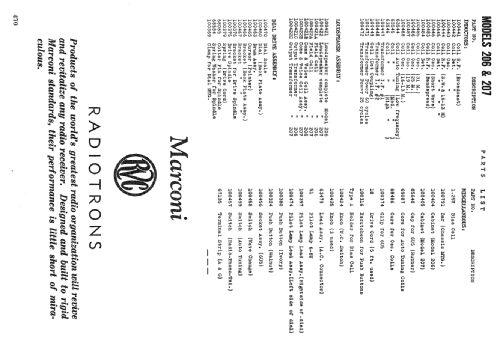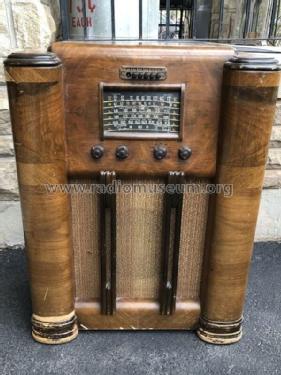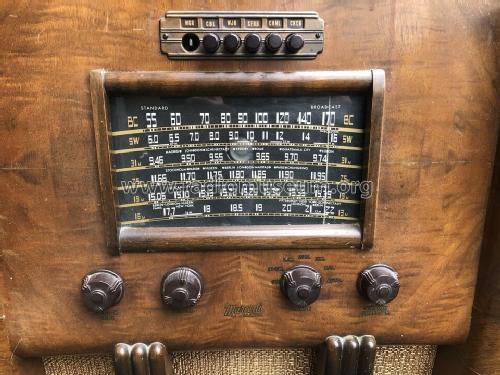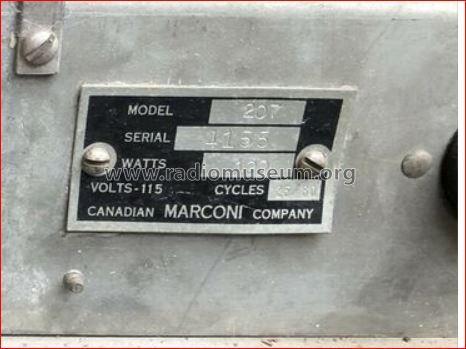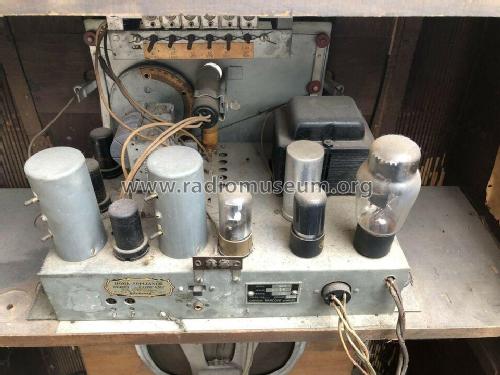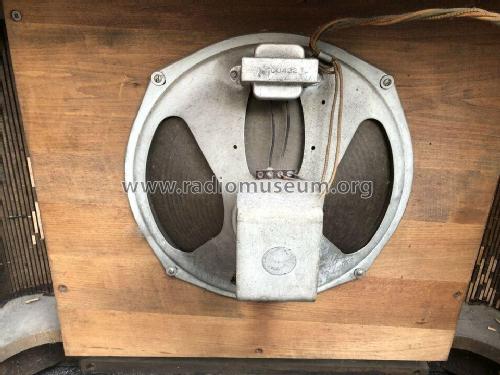- Land
- Kanada
- Hersteller / Marke
- Canadian Marconi Co. Ltd. (CMC, Esterline), Marconi's Wireless; Montreal, QC
- Jahr
- 1941 ?
- Kategorie
- Rundfunkempfänger (Radio - oder Tuner nach WW2)
- Radiomuseum.org ID
- 299007
-
- anderer Name: CMC Canada || Marconi, Canada
Klicken Sie auf den Schaltplanausschnitt, um diesen kostenlos als Dokument anzufordern.
- Anzahl Röhren
- 7
- Hauptprinzip
- Super mit HF-Vorstufe; ZF/IF 462.5 kHz; 2 NF-Stufe(n)
- Anzahl Kreise
- 7 Kreis(e) AM
- Wellenbereiche
- Mittelwelle und mehr als 2 x Kurzwelle.
- Betriebsart / Volt
- Wechselstromspeisung / 115 Volt
- Lautsprecher
- Dynamischer LS, mit Erregerspule (elektrodynamisch) / Ø 12 inch = 30.5 cm
- Belastbarkeit / Leistung
- 3.5 W (8.5 W max./spitze)
- Material
- Gerät mit Holzgehäuse
- von Radiomuseum.org
- Modell: 207 - Canadian Marconi Co. Ltd. CMC,
- Form
- Standgerät mit Drucktasten.
- Bemerkung
-
The Canadian Marconi model 206 is a 7-tube console radio with tuning eye tube and pushbutton station selector. Covers the following ranges:
Band Frequency (kHz) Standard Broadcast 540 - 1710 Shortwave 5860-16030 31m 9450 - 9750 25m 11645 - 11965 19m 15050 - 15400 Shortwave 17600 - 22040
- Literatur/Schema (1)
- Marconi Service Manual (Volume 1) (P. 467-470)
- Autor
- Modellseite von Tom Seeger angelegt. Siehe bei "Änderungsvorschlag" für weitere Mitarbeit.
- Weitere Modelle
-
Hier finden Sie 465 Modelle, davon 328 mit Bildern und 378 mit Schaltbildern.
Alle gelisteten Radios usw. von Canadian Marconi Co. Ltd. (CMC, Esterline), Marconi's Wireless; Montreal, QC
Forumsbeiträge zum Modell: Canadian Marconi Co.: 207
Threads: 1 | Posts: 2
This is my first renovation, and my first post, so I'm a bit reticent in case I have my finding wrong. But I don't think so!
This is the Marocni 207, electrically identical, I believe, to the 206, and I'm looking at R18 / R19 in parallel, which feed voltage to the screen grids of the first & second stages of the RF path. The components list shows these as 2K6, 2W each, to give a combined value of 1K3 at 4W.
In my restoration of serial no. 4511, the parallel pair shows 40K instead of the advertised 1K3. That's a clue! But the resistors themselves have colour coding for 26K, not 2K6. Looking at the specs for these two valves (sorry, I can't get used to calling them "tubes," even though I now live in Canada), it's clear that a value of 1K3 for the resistor pair just doesn't work. 13K is better.
So I'm postulagting that the components list has the values wrong. Does that make sense? If I get agreement, I'll re-post this as information.
I'm finding that antique radio restoration is a combination of detective work, logic, and hard-earned knowledge. I love it!
Alistair Thomson, 25.Nov.18



